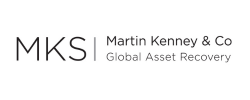2009, with illustrations, XX, 1145 pages, 15,8 x 23,5 cm, hardcover, ISBN 978-3-503-11660-7, Erich Schmidt Verlag
In my many years of investigating serious fraud as a journalist, a recurring theme is how little in the form of criminal proceeds are recovered from perpetrators for distribution to their victims. Even when fraudsters are actually criminally prosecuted and convicted, which is rare in itself, it is rarer still for there to be any meaningful recovery of their assets.
There are several reasons for this. A lack of money on the part of victims to fund a recovery effort is the most common one. Another is that, even when substantial funds are made available to try to locate, seize and freeze the assets of fraudsters, victims often hire attorneys who lack the necessary expertise, knowledge and experience to successfully unravel and pierce the complicated legal structures in multiple jurisdictions that fraudsters typically set up to protect their assets. In some cases, the mistakes are innocent and, in others, they are not, with investment frauds often followed by asset recovery scams.
If victims are not careful, they can end up spending millions of dollars (on top of what they have already lost in the fraud) going nowhere slowly. It does not have to be this way, however, and I am confident that you will find FraudNet’s World Compendium “Asset Tracing & Recovery” a useful tool in educating you how to do things the right way so that you may meaningfully contribute to the ongoing fight by honest and hard-working people around the world to redress the enormous imbalance that currently exists between what is stolen and what is recovered.
In asset recovery, where fraudsters are prone to move their money out of concealed accounts in the most legally inhospitable of jurisdictions at the first hint of trouble and where being a day late is likely to cause an asset-tracer to be considerably more than a dollar short, it is imperative for victims and their advisors to act quickly and decisively. To do that, they must hire attorneys and investigators who know what they are doing. Three of the contributing authors to this book are known to me personally and fall into this category, namely Martin Kenney, Ed Davis, and Bernd Klose.
The most sincere compliment I can pay Martin, Ed and Bernd collectively is that, in the highly unlikely event that I decide to convert from an investigator of fraud to a perpetrator of it, they are among the last people on earth I would want poking into my financial affairs. It would possibly worry me more than a criminal investigation, which I suspect might be easier to deal with. On a more sombre note, as an investigative journalist, I witness the effects of serious fraud on a continual basis. I see the emotional devastation and misery that often accompanies a financial loss. It is not a pretty sight. None of us are immune from becoming a victim, including me.
It is with some embarrassment that I confess that, even with my extensive experience of investigating dishonesty, I too have suffered a financial loss by placing my trust in people who were not deserving of it. Given the pervasiveness of dishonesty in our society, books like FraudNet’s World Compendium “Asset Tracing and Recovery” have a special importance. It will assist readers in hitting fraudsters where it hurts them
